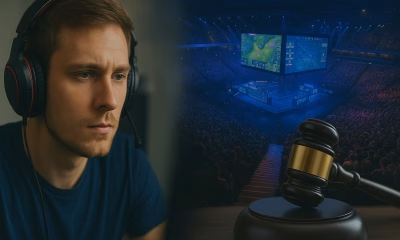IP
Alan Wake 2: Navigating the Influences, Legal Echoes, and the Creative Realm
Uncover the mysterious synergy between Alan Wake 2’s Dark Place and Twin Peaks’ Black Lodge, exploring their narrative parallels and the legal nuances of creative influence in the gaming world.

In the realm of video games, creativity often draws inspiration from various sources, weaving together a unique tapestry that captivates players worldwide. One such example is Remedy Entertainment’s Alan Wake 2, a game that boldly ventures into unexplored territories within the survival horror genre. However, as the game embraces influences such as David Lynch’s Twin Peaks and the Resident Evil franchise, questions about the legal implications of such inspiration arise. In this blog post, we explore the creative process behind Alan Wake 2, its clear inspirations, and the legal considerations surrounding the use of ideas in the gaming industry.
Embracing Inspirations
Alan Wake 2 wears its inspirations proudly, with a notable nod to David Lynch’s iconic Twin Peaks series. From the sleepy mountainside town setting to the incorporation of supernatural elements, the game’s homage to Twin Peaks is evident. Remedy Entertainment, the creative force behind Alan Wake 2, doesn’t shy away from acknowledging these influences, creating a game that stands as a testament to the interconnected nature of the gaming landscape.
The parallels between Twin Peaks and Alan Wake 2 extend beyond mere homage. The narrative structure, atmospheric tone, and even specific elements, such as alternative dimensions, and the mysterious Dark Place, pay homage to Twin Peaks’ Black Lodge. In the Twin Peaks narrative, Dale Cooper finds himself trapped inside the Black Lodge at the conclusion of the second season, remaining confined until the show’s third season, Twin Peaks: The Return, aired 25 years later. As Alan Wake 2 unfolds, Alan faces a parallel fate, having been trapped in the Dark Place for 13 years. Both Alan Wake 2 and Twin Peaks share the theme of their main protagonists confronting malevolent doppelgangers. In Twin Peaks, Dale Cooper’s evil counterpart replaces him in the real world; conversely, Alan in Alan Wake 2 contends with Scratch, a Dark Presence manifestation of himself. The game is replete with numerous other nods to Twin Peaks, ranging from specific camera angles and overall vibes to the inclusion of the series’ creators making cameo appearances as FBI agents. However, it is essential to recognise the delicate balance between inspiration and infringement in the world of intellectual property.
Legal Considerations – The Idea/Expression Dichotomy
As we delve into the legal aspects, it is crucial to understand the idea/expression dichotomy in copyright law. This fundamental principle asserts that copyright protects expressions of ideas rather than the ideas themselves. In other words, the core of copyright law aims to promote progress by ensuring that ideas remain available for future creators. This principle safeguards against monopolising overarching concepts and allows for a diverse array of original works on similar subjects.
Copyright law seeks to prevent overreach by distinguishing between protectable expressions and fundamental building blocks that should remain in the public domain. This distinction ensures that the monopoly granted by copyright does not stifle creativity but, instead, fosters an environment where creators can build upon existing ideas.
Conclusion
Alan Wake 2 serves as a testament to the interconnectedness of creative works. Understanding the legal nuances surrounding the idea/expression dichotomy ensures that the gaming industry continues to flourish, with creators building upon the rich tapestry of ideas while respecting the foundations that came before. Alan Wake 2 stands as a creative marvel, navigating the delicate balance between influence and originality in the ever-evolving world of video game storytelling.

















